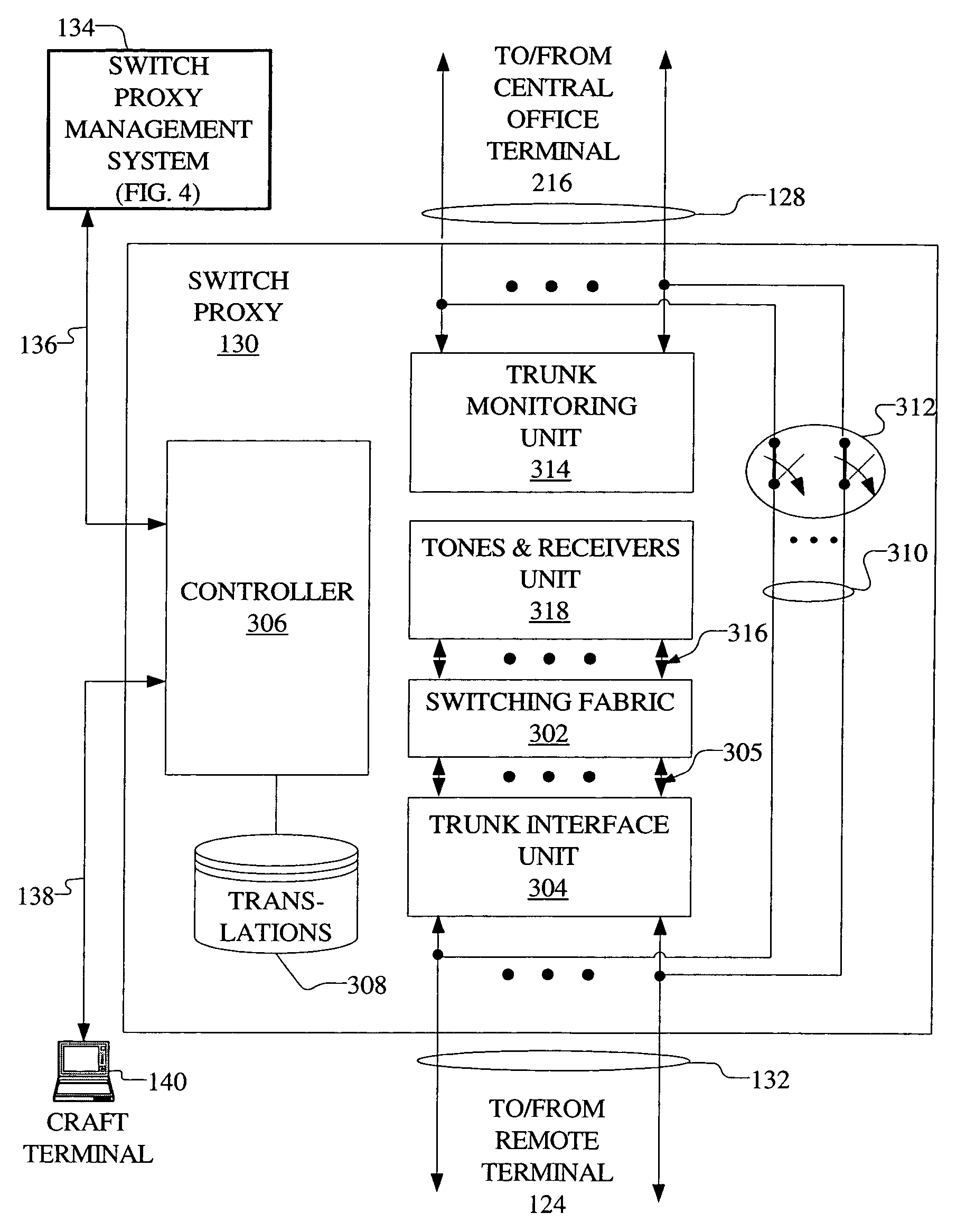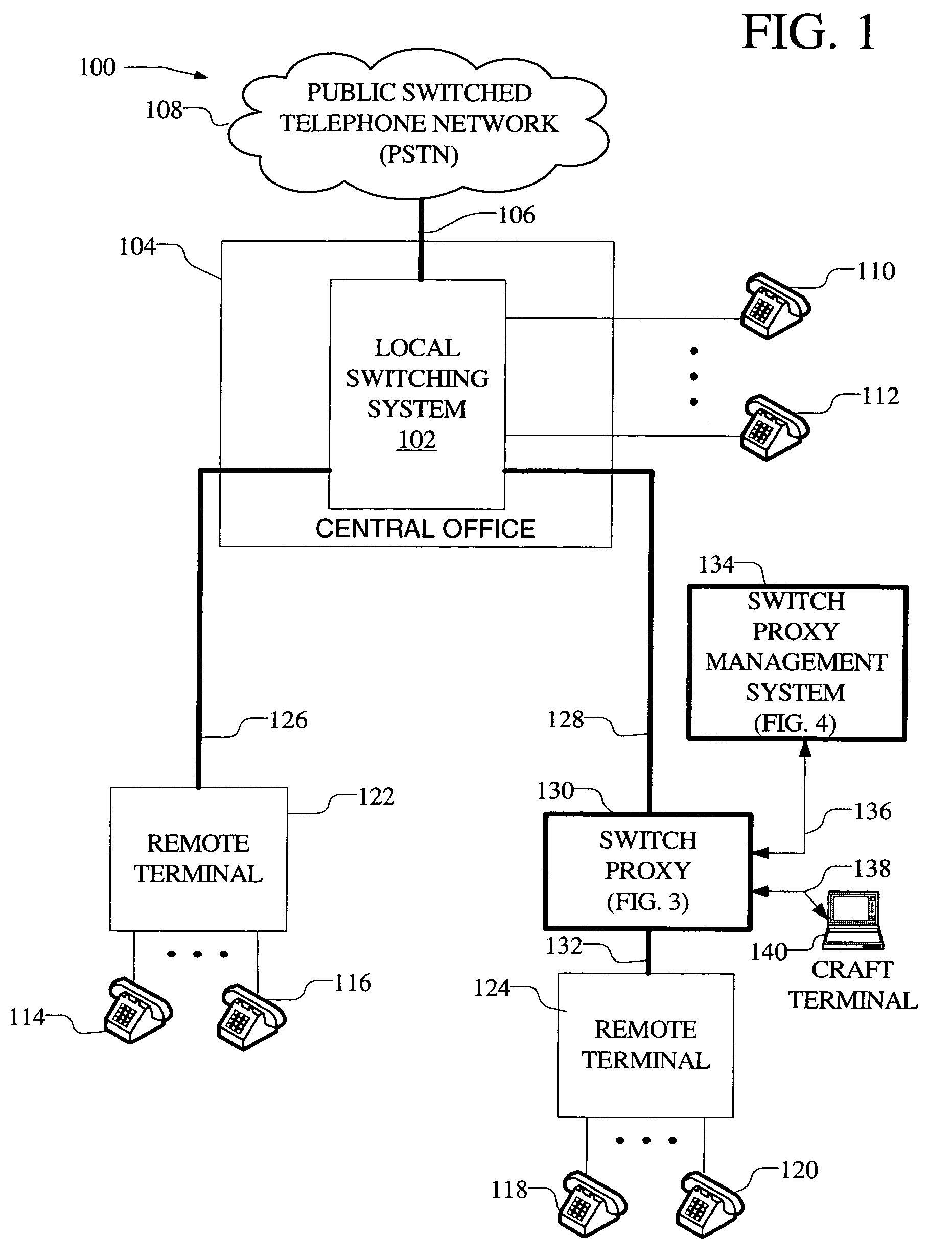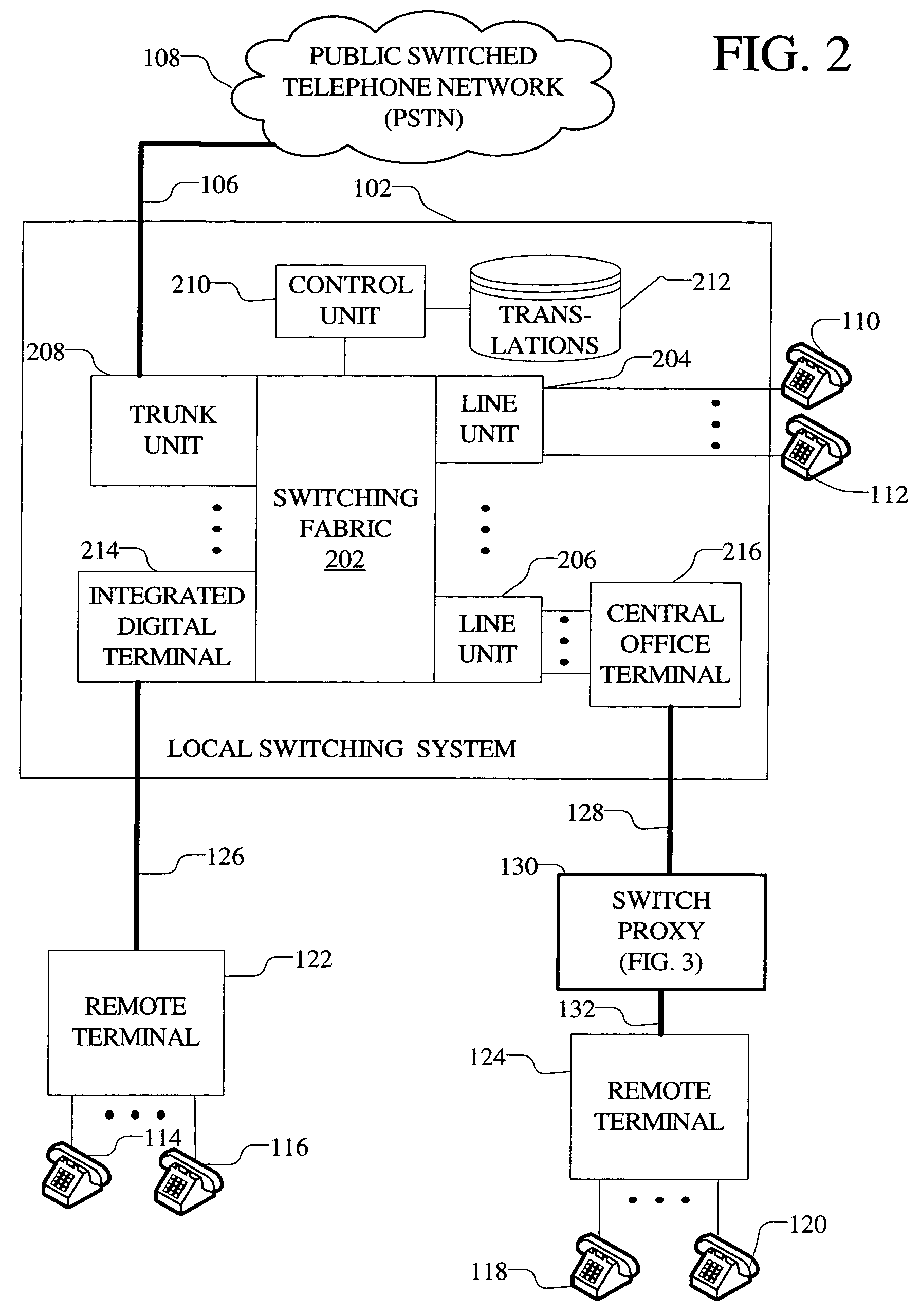Switch proxy for providing emergency stand alone service in remote access systems
a stand alone service and switch proxy technology, applied in the field of switch proxy, can solve the problems of confounded severity of the problem, subscribers served by the remote terminal no longer have telephone service, and subscribers terminated on the remote system cannot communicate with one another
- Summary
- Abstract
- Description
- Claims
- Application Information
AI Technical Summary
Benefits of technology
Problems solved by technology
Method used
Image
Examples
Embodiment Construction
[0022]FIG. 1 is a block diagram of a wireline local telephone network 100 in which an exemplary embodiment of this invention operates. In the wireline local telephone network 100 of FIG. 1, a local switching system 102 (also referred to herein as local switch 102 or switching system 102), typically residing in a central office 104 is connected through trunk group 106 to the public switched telephone network (PSTN) 108 which provides for interconnectivity with subscribers worldwide. This configuration is used herein for convenience and clarity in describing the invention; it is well known in the art that local switching system 102 is part of PSTN 108. A plurality of telephone subscribers 110, 112 may be connected directly to the local switching system through subscriber lines. Additionally, a plurality of subscribers 114, 116, 118, and 120 may be supported from remote terminals 122 and 124 which interconnect to the local switch through trunk groups 126 and 128 respectively. In the pr...
PUM
 Login to View More
Login to View More Abstract
Description
Claims
Application Information
 Login to View More
Login to View More - R&D
- Intellectual Property
- Life Sciences
- Materials
- Tech Scout
- Unparalleled Data Quality
- Higher Quality Content
- 60% Fewer Hallucinations
Browse by: Latest US Patents, China's latest patents, Technical Efficacy Thesaurus, Application Domain, Technology Topic, Popular Technical Reports.
© 2025 PatSnap. All rights reserved.Legal|Privacy policy|Modern Slavery Act Transparency Statement|Sitemap|About US| Contact US: help@patsnap.com



